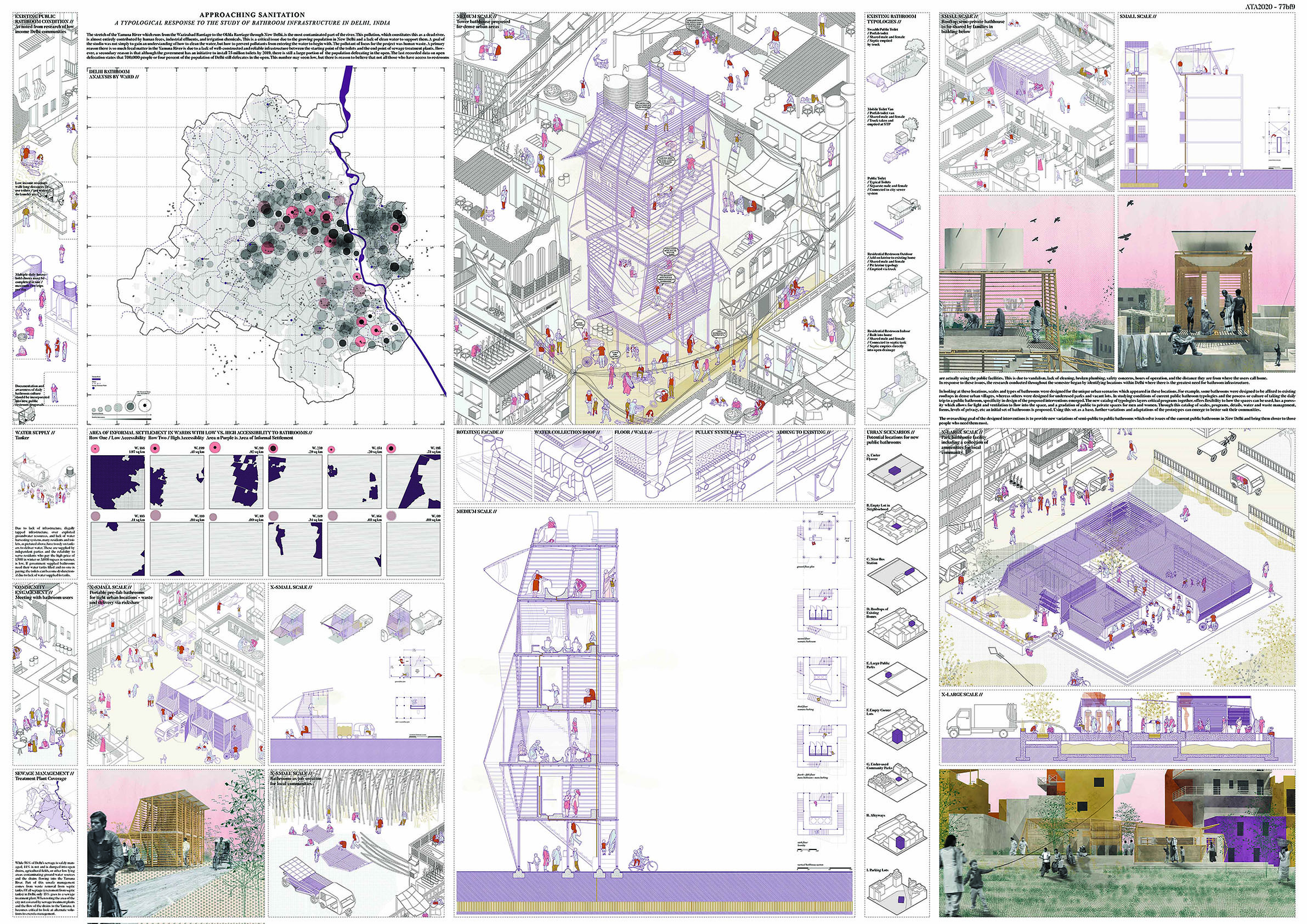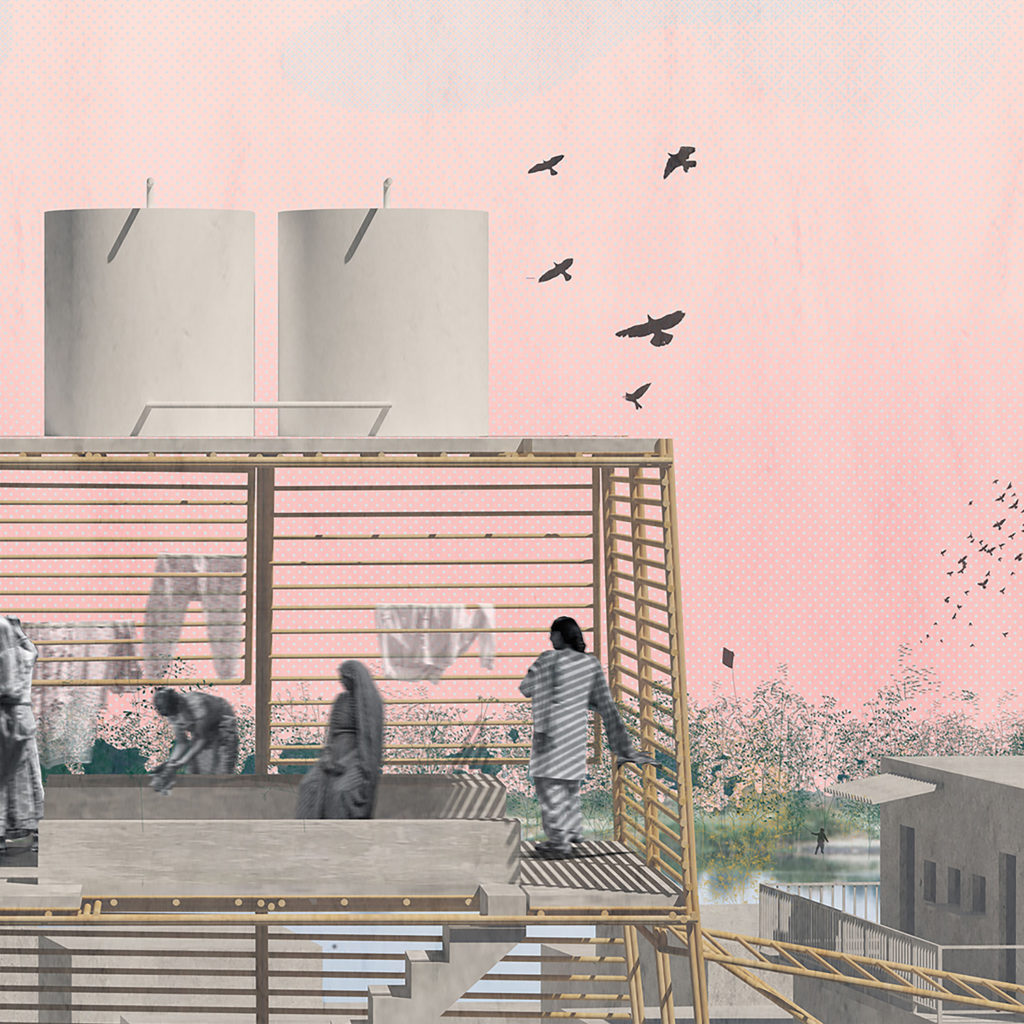The stretch of the Yamuna River which runs from the Wazirabad Barriage to the Okhla Barriage through New Delhi, is the most contaminated part of the river. This pollution, which constitutes this as a dead river, is almost entirely contributed by human feces, industrial effluents, and irrigation chemicals. This is a critical issue due to the growing population in New Delhi and a lack of clean water to support them. A goal of the studio was not simply to gain an understanding of how to clean the water, but how to prevent pollutants from entering the water to begin with. The pollutant of focus for the project was human waste.
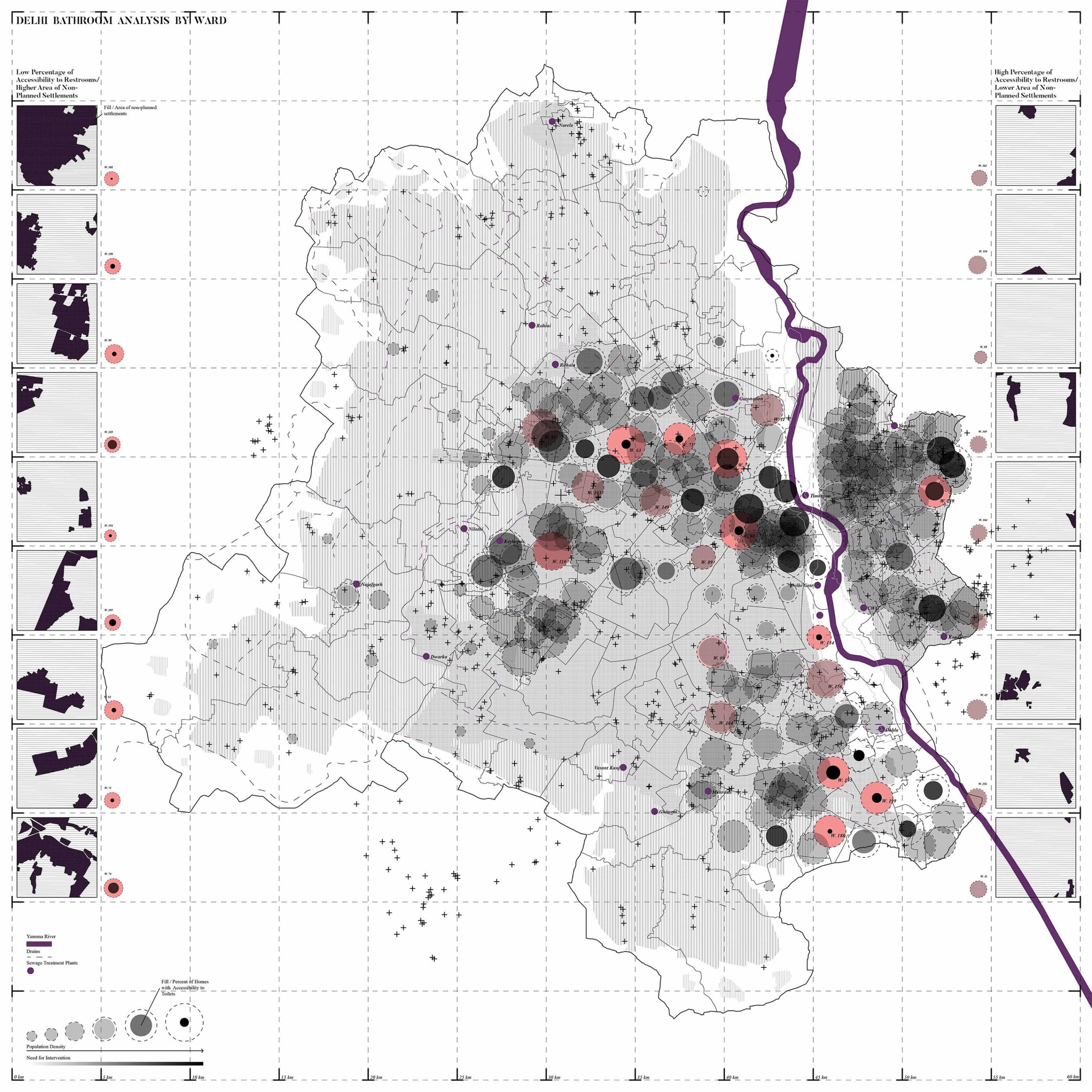
A primary reason there is so much fecal matter in the Yamuna River is due to a lack of well-constructed and reliable infrastructure between the starting point of the toilets and the end point of sewage treatment plants. However, a secondary reason is that, although the government had an initiative to install 75 million toilets by 2019, there is still a large portion of the population defecating in the open. The last recorded data on open defecation states that 700,000 people or four percent of the population of New Delhi still defecates in the open. This number may seem low, but there is reason to believe that not all those who have access to restrooms are actually using the public facilities. This is due to vandalism, lack of cleaning, broken plumbing, safety concerns, hours of operation, and the distance they are from where the users call home. In response to these issues, the research conducted began by identifying locations within Delhi where there is the greatest need for bathroom infrastructure. By further examining the urban fabrics of the wards with low accessibility to bathrooms, a catalog of typical locations for new bathrooms emerged.
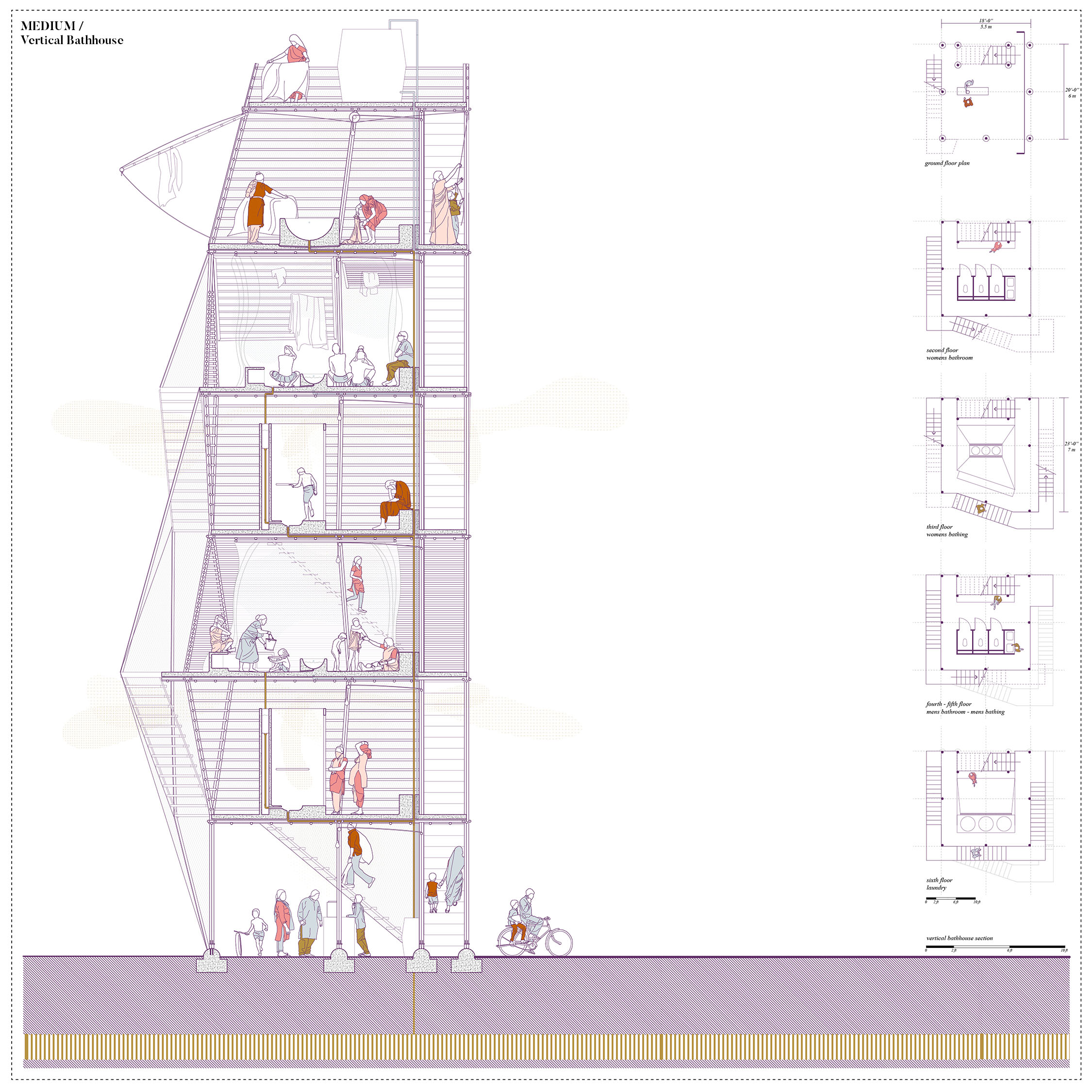
In looking at these locations, an initial set of scales and types of bathrooms were designed for the typical urban scenarios. For example, some bathrooms were designed to be affixed to existing rooftops in dense urban villages, whereas others were designed for underused parks and vacant lots. In studying conditions of current public bathroom typologies and the process or culture of taking the daily trip to a public bathroom, specificity in design of the proposed interventions emerged. The new catalog of typologies layers critical programs together, offers flexibility to how the spaces can be used, has a porosity which allows for light and ventilation to flow into the space, and a gradation of public to private spaces for men and women. For expansion of the initial set, a matrix of influences and criteria is created for use on further variations of the prototypes so they can continue to emerge and adapt to their communities. The overarching goal of the designed interventions is to provide new variations of semi-public to public bathrooms which solve issues of the current public bathrooms in New Delhi and bring them closer to those people who need them most.
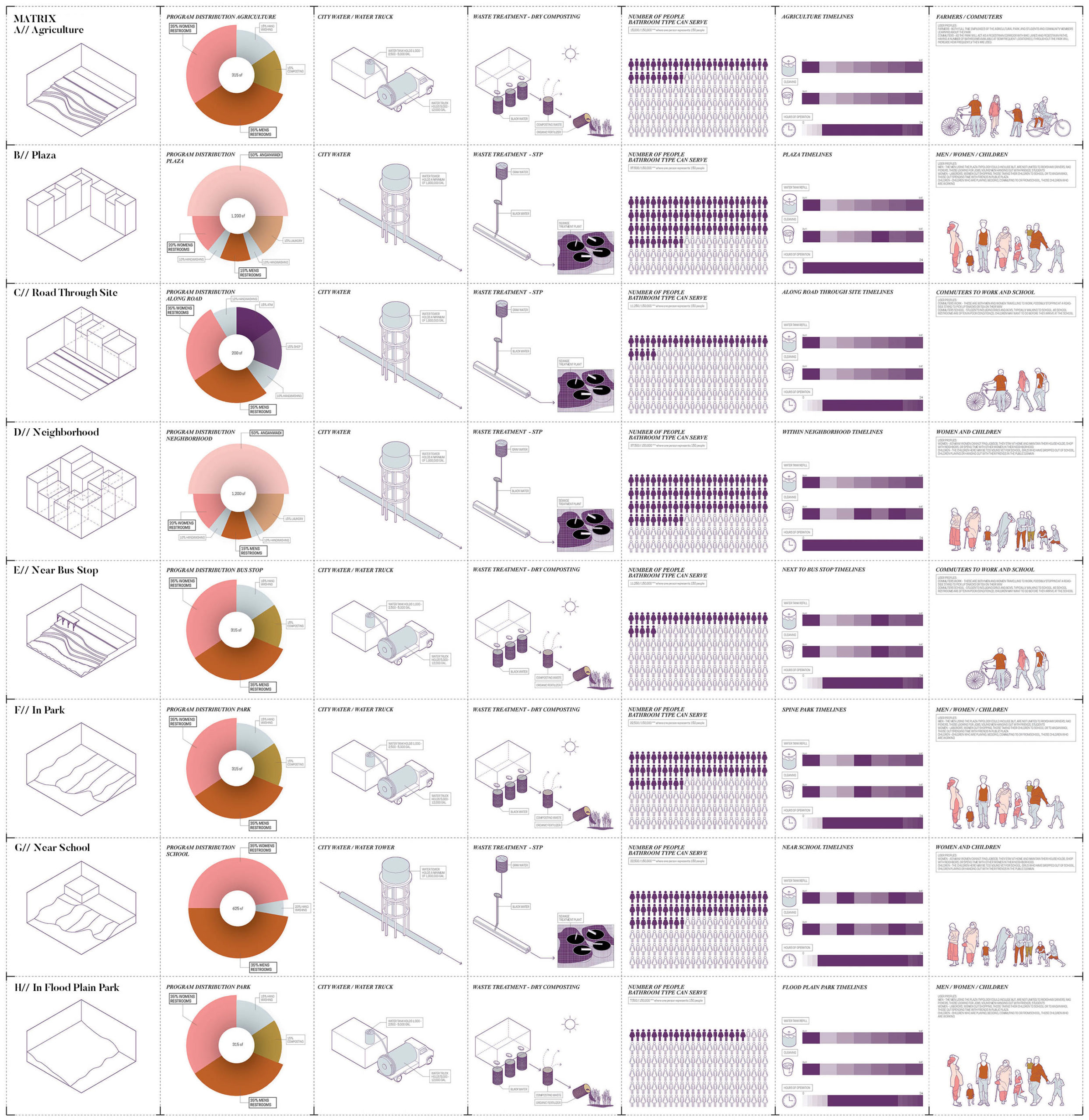
The Board:
